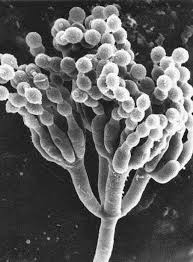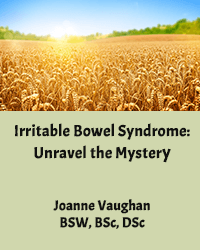Antibiotics: Use or Overuse…?
Penicillin was termed the “miracle drug” when it was first used in the 1940’s.
What’s in this Article?
• Why penicillin fell from glory
• How it was discovered
• How antibiotics work
• Historical perspective: historical use
• Factors in resistance
• They fight back
• Turning points in the war
• The price of overuse
• Do your due diligence
• Hear and Here is what Renee www.newlookimage.com says about her experience with her daughter who has MRSA, antibiotic resist bacteria. A poignant and honest appraisal of what you need to know: Read her Story
Penicillin: Miracle drug – Why can’t we use this term today?
Penicillium is in the family of antibiotics. Antibiotics are antibacterial and designed to eradicate disease causing microbes that have found their way into the human body. Penicillium became an integral medical breakthrough at a time when millions were threatened with bacteria diseases with a simple infected cut. Small pox, in its ravages, threatened Europe, the Native American Indian population as well as the new colonies of North America. To understand the role of penicillium and its miraculous leap into medicine is to understand the origins, structure and biochemical action of penicillium. I will present these as well as the historical use of penicillium, limits of, pivotal historic points in its development and the current day status.
Some Beginning: Penicillium was originally observed and isolated, quite by accident, in 1928 by Alexander Fleming. A second glance at a moldy Petri dish containing bacteria was about to change the world of harmful bacteria. In 1940, the first successful clinical trials were completed using penicillium as an antibiotic against disease producing microbes, by a French microbiologist Rene Dubos. Penicillium is derived from molds, predominantly penicillium and cephalosporium.
How it Works: The impact of penicillin is on the cell wall of the microorganism. There are two basic types of bacteria, gram positive and gram negative. Tfhe difference is in the structure of their cell walls. Gram positive bacteria are highly susceptible to the antibiotic. The cell wall of gram positive bacteria consists largely of multiple layers of peptidoglycan. Penicillin interferes with the synthesis of the peptidoglycan structure, greatly weakening the cell wall causing the cell to undergo lysis. Gram negative bacteria have a different cell wall. It is made up mostly of lipids, protein, lipoprotein, phospholipids and lipopolysaccarides. This structure is less impacted by penicillin. Human cell walls lack peptidoglycan. Penicillin is most effective at eradicating growing gram positive bacteria.
After the development of antibiotics, their application against disease causing microbes transformed medical care. The positive use of these drugs dramatically increased the survival and recovery of humans and animals from bacterial infection. This was an amazing contribution in the war efforts of WW II as thousands of soldiers were saved from gangrene with antibiotic use. From January to May 1943 over 400 million units of penicillin were produced by twenty one pharmaceutical companies. By the end of the war U.S.companies were making 650 million units per month.
There are over 50 chemically related antibiotics in the penicillium family. They are either natural or semi synthetic. They are distinguished from each other by the chemical side chain attached to their nuclei. Natural penicillin is extracted from cultures of the mold Penicillium. Various combinations of penicillin with other compounds affect its concentration and effectiveness on organisms. PenicillinV, which is stable in the presence of stomach acids and Penicillin G are the best of the natural penicillin. As bacteria became more resistant the structure of penicillin had to evolve. Semi synthetic penicillin was adapted to improve the effectiveness of natural penicillin. What are referred to as broad spectrum antibiotics are all aimed at gram negative bacteria. The advantage of the synthetic drugs also allowed the use of natural molecules with a synthetic side chain designed to avoid penicillinase-type resistance. Monobactams is a synthetic antibiotic which has shown great usefulness against gram negative bacteria while showing remarkably low toxicity. Many antibiotics exist but for our purposes we will look at the penicillin family of antibiotics.
Beginning of Resistance: The fear of bacteria resistance and antibiotic overuse can be traced back to its origins. Alexander Fleming warned about the improper use of antibiotics in 1945. He warned against using doses too small or for too short a period of time as to not eradicate the last of the microbes in the infection. He knew that leaving any behind would educate them in resistance and allow them to pass that gene on to other generations through mutation. Natural selection plays a large role in survival. Bacteria that survive pass their resistant gene to new generations. Transference can occur in as little as twenty minutes as new generations are produced.
By the end of the 20th century, bacteria such as staphylococcus aureus or “Staph infection” and the Japanese Pseudomonas aeruginosa were both resistant to antibiotic use. The first resistant S. aureus was reported as far back as 1981.
Most antibiotics are prescribed for respiratory, genitourinary, skin and sense organs. The majority of these are viral in nature, particularly respiratory and ear infections. Antibiotics, as is well known, are harmless to viruses.
A study on Canadian preschool children showed that generally 51% or 66,419 antibiotic prescriptions are unnecessarily prescribed.
• Misuse is one factor leading to resistance and mutation.
Other factors that led to resistance:
• Lack of public education or putting pressure on Physicians to “do something”; provide the magic bullet. Physicians are eager to have their patients leave satisfied and often succumb to that ‘do something’ pressure.
• Misuse in under developed countries: In some countries, prescriptions are not required. Antibiotics are obtained over the counter.
• Misuse and overuse in Agriculture.
They fight back: Disease causing microbes have their own bacterial weaponry. Resistance can occur on many fronts. Bacteria can fight back by altering their cell walls, producing enzymes that dismantle the antibiotic. They can alter their ribosomes that change the binding sites of antibiotics. Another way is through gene conferring resistance whereby DNA mutation can occur. This particular motus operendi is often indicated by a star burst under the microscope. DNA mutation can occur by transformation where DNA is taken up from another bacterium or by a single circle of DNA plasmid which can provide a variation of different resistances.
Interestingly enough, in 1969, the United States Surgeon General William Stewart made a statement to virtually close the book on infectious disease because of his confidence in the effectiveness of antibiotics and penicillin. Unfortunately in 1998, Harvard Medical School Professor Mary Wilson confirmed that infectious diseases will certainly be around for the immediate future at least.
Turning Points in the War Against Microbes: There are some pivotal points through the historical use of penicillin that point to the change in conception of this being a miracle drug, to taking its place among the profile of armory that is amongst the pharmaceuticals designed to control disease.
• In 1993 the first case of vancomycin resistant entercocuss bacteria was reported in Ontario.
• In 1995 there was a notable increase in methicillin resistant S. aureus reported across Canada.
• In 1995 Venter, Smith and Fraser illustrated the first complete gene sequence of micro organism Haemolfilous Influenza.
• NARMS, the National Antimicrobial Resistance Monitoring System was established in 1996. Its aim was designed to monitor the reaction of humans and animals to seventeen antimicrobial drugs. The goal was to extend the lifespan of such drugs through educating responsible and prudent use of antimicrobial drugs. They were also responsible for identifying other areas for investigation as it applies to enteric bacteria.
• In 1997 the Canadian Consensus on Controlling Antimicrobial Resistance meeting was held in Montreal, Quebec.
• In 1999, Health Canada started providing funding for the Canadian Committee on Antibiotic Resistance activities.
• In 2000, The World Health Organization expressed deep concern in a report they issued. The report was named Report on Infectious Diseases – Overcoming Antimicrobial Resistance. The only bacterium to be fully eradicated was small pox. It is well known, however, that any person having been vaccinated would require a second should an outbreak occur as a result of the unleashing of existing small pox bacteria.
The Price of Over use: The overuse of antibiotic has other systemic implications to human health. Penicillin, although a vital and critical addition to disease control, is well known for its devastating effect on healthy intestinal flora which plays a critical role in human health. Super strain L acidophilus is tenacious in its position along the intestinal wall crowding out unhealthy flora. Wiping out this strain with repeated antibiotics increases the likelihood of candida overgrowth and overgrowth of other potentially harmful bacteria along the intestinal wall.
Healthy Intestinal Flora:
• B. bifidum, another healthy flora species is involved in the production of some B vitamins and vitamin K.
• Healthy floras also play a key role in recirculation of healthy estrogen in woman, as well as lowering cholesterol levels in the blood.
• Acidophilus is integral in protein digestion and the digestion of lactose or milk sugars.
• Healthy bacteria plays a pivital role in immune response
• Evidence is beginning to surface that has seen a corresponding increase in autoimmune disease with increased antibiotic use.
The destruction of these healthy flora and the health implications has very systemic effects on the human body. Recent research has mapped out the impact of antibiotic use.
While the number of infections, including life threatening infections has diminished substantially, the increase in autoimmune disease has increased markedly.
Do your Due Diligence:
• Please, if you require antibiotics, take the following precautions:
• Take only as your physician has prescribed and do not cut short your duration because you “feel better”
• Along with taking your antibiotics, take your probiotics – make sure they are a high quality. Natren or Source Naturals is my choice in probiotics. Take them alongside your probiotics and take them for a minimum one month to three months following. Do not skimp.
• If you have autoimmune related health issues, do this: take a six month course of probiotics, work with a Nutritionist who is knowledgeable in hypoallergic and cleansing diets, also have your homocysteine levels checked
• Wash your hands thoroughly, as the greatest precaution to avoiding bacterial infections
In summation, the discovery of penicillin opened the world of medicine. Fundamentally, however, the leaders of Medicine, starting with the General Practitioner, must be resolved and prudent in the dispensing of penicillin and the whole antibiotic family. Plainly put the scripting of medicine can be motivated by one factor only, eradicating the disease and restoring health using exact medications. Physicians need to educate their patients on the use of Probiotics as well.
Please, use the resources and people who have put in the years of study in Natural Health and Natural Therapies. Antibiotics could potentially return to their original position of usefulness and glory in anti bacterial function. The systemic issues of retaining and encouraging the growth of health intestinal flora would also take their rightful place in health and immunity. Medical leaders must be guided by the responsible use of authority. They must resist other temptations to use medical interventions for purposes of pacifying the patient and being unduly influenced.



